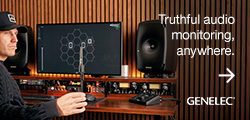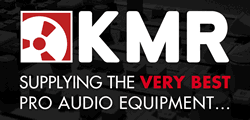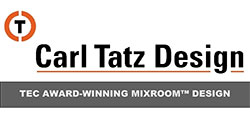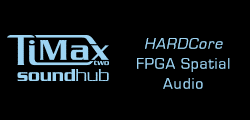![]() I visited a new postproduction house in London’s Soho a few years back. Along with vast attention to equipment and interior design, it came complete with a backstory involving a crashed spaceship and technology from another world. It was pretty amazing.
I visited a new postproduction house in London’s Soho a few years back. Along with vast attention to equipment and interior design, it came complete with a backstory involving a crashed spaceship and technology from another world. It was pretty amazing.
But there was something deeply troubling about the gauze covering the monitor speakers – it helped with the story but it wasn’t going to do anything for the sound…
The thinking behind all of this was aimed squarely at a client base that needed to be impressed but wasn’t overly knowledgable about sound. Sound business maybe, but not sound thinking.
Very recently, a rather different story came my way.
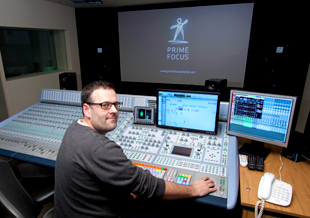 This also concerned a Soho facility – part of the Prime Focus global visual entertainment services group, which has facilities in the US and India, and boasts an established ‘A list’ client portfolio – that was looking to maximise its appeal to the cinema and television sound markets. And it also concerned the facility’s monitor loudspeakers, but regarded them a rather different light.
This also concerned a Soho facility – part of the Prime Focus global visual entertainment services group, which has facilities in the US and India, and boasts an established ‘A list’ client portfolio – that was looking to maximise its appeal to the cinema and television sound markets. And it also concerned the facility’s monitor loudspeakers, but regarded them a rather different light.
The group’s Soho postproduction facilities include an Emmy award-winning audio department, handling sound for TV documentaries, TV advertising and cinema post. The team felt that the facility had more to offer if they improved its audio performance.
Specifically, they were focused on the monitoring: ‘It’s paramount to have accurate monitoring and acoustics, and the clients need a comfortable place to work, but room doesn’t perform acoustically, clients will soon stop mixing there,’ warns Ben Hooper, UK Head of Audio at Prime Focus, in response to my earlier encounter.
The London studio complex operated by Prime Focus comprises five mixing studios in total, all with ATC monitoring, Pro Tools DAWs and Avid Icon desks. There are also three stereo rooms and two 5.1 suites.
Built in 2009, Studio 4 is the Prime Focus London’s flagship audio room – the largest and most suitable for work destined for cinema. Although it was producing excellent results in 5.1 for its HD television clients, the studio felt it could improve the mixes it could deliver for film – and it believed the solution lay in optimising the performance of its surround monitoring.
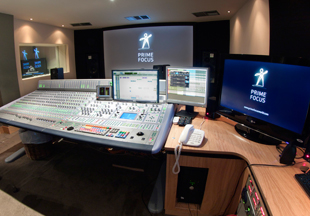 So what was troubling Hooper and the team about the studio monitor set-up?
So what was troubling Hooper and the team about the studio monitor set-up?
‘For film projects, we were mixing in Studio 4 and taking the Dolby Master mixes to licensed soundstages here in Soho,’ he explains. ‘But they sometimes sounded quite different on the soundstage. We tried some acoustic treatment in the room and also some room optimisation software, but we weren’t really getting the results we wanted.’
The team turned to eMerging, the UK distributor for the Trinnov Audio range of room/speaker optimisation and loudness metering system.
‘Film mixes must translate into unforgiving large spaces where every nuance of the audio is audible,’ Hooper continues. ‘The Trinnov hardware gives us that accuracy. Also the distance and positioning of the speakers differs slightly between TV and cinema mixing – for TV the rears are behind you, for cinema you need an array from side to rear. Also the front three speakers are aligned horizontally in cinema.’
Before and after
The story begins at London’s BVE show in February 2011, where Hooper came across the French manufacturer with its Trinnov’s MC processor and Optimizer software in the hands of UK distributor, eMerging (who also handle Avid, Merging Technologies, Steinberg, Smart AV and MicW). Having seen it demonstrated by company CEO Arnaud Laborie, he arranged a visit from eMerging’s Paul Mortimer. A strighforward demonstration of a two-channel MC processor at Prime Focus readily convinced Hooper and Prime Focus Senior Dubbing Mixer Phitz Hearne that they should spend more time with the system. A month later, Mortimer returned with a surround-capable MC processor and Jacques Di Giovanni, Trinnov Director of Business Development. Di Giovanni calibrated the system to the acoustics of Studio 4 and demonstrated mixes in the room, first with the system switched off, and then with the Trinnov switched on…
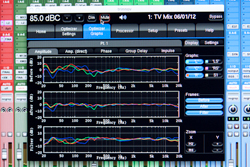 ‘The before and after difference was remarkable – tonally, and also in terms of the relative balances in the mixes we produced and their stereo imaging,’ Hooper recalls. ‘And when we auditioned some at local soundstages, their repeatability and playback consistency had also improved.’
‘The before and after difference was remarkable – tonally, and also in terms of the relative balances in the mixes we produced and their stereo imaging,’ Hooper recalls. ‘And when we auditioned some at local soundstages, their repeatability and playback consistency had also improved.’
The Prime Focus management was readily convinced of the business case for buying into the Trinnov system. Hooper continues: ‘If you compare the cost of this system to the costs we might have incurred mixing, then renting a cinema soundstage to check the mix, coming back and tweaking the mix, then renting the soundstage again… there was no comparison.’
Studio 4’s operation involves an Avid Icon-D digital mixing surface, along with ATC SMC series loudspeaker monitors run using a Dolby DP570 multichannel content management system and an Avid Xmon analogue monitoring system – and now the Trinnov set-up.
Trinnov’s MC Processor offers a variety of analogue and digital I/O options, and may be run in stereo or multichannel operation for surround. It measures the user’s acoustic environment using frequency sweeps and a multi-capsule three-dimensional measurement microphone of Trinnov’s own design, positioned in the mix engineer’s sweet spot.
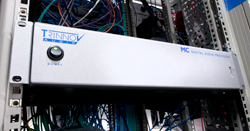 The processor is added to the studio signal path between the mixing console and the loudspeakers, where it makes carefully calculated adjustments to the frequency, phase and delay of the audio channels to correct the room’s deficiencies. The software element of the system, the Optimizer, is available in a variety of configurations, from the ‘set and forget’ Optimizer Runtime version to the more user-configurable Runtime and Toolbox edition that Prime Focus has installed.
The processor is added to the studio signal path between the mixing console and the loudspeakers, where it makes carefully calculated adjustments to the frequency, phase and delay of the audio channels to correct the room’s deficiencies. The software element of the system, the Optimizer, is available in a variety of configurations, from the ‘set and forget’ Optimizer Runtime version to the more user-configurable Runtime and Toolbox edition that Prime Focus has installed.
The Optimizer analyses the room measurements in the time-frequency domain, identifying early reflections depending on their amplitude, frequency, direction and arrival time, and provides compensation of resonance modes, smoothing the reverberation to prevent colouration. The automated room correction process is achieved using a combination of IIR filters and FIR filters; the IIR filters allow for very accurate equalisation in the low range, while the FIR filters work full range. A number of custom adjustments can also be made to the signal using the Optimizer software, allowing the user to ‘virtually’ adjust the placement of the loudspeakers without physically moving them.
‘Most of the improvement though with the Trinnov has been in the phase coherence of the front speakers,’ Hooper reports. ‘Much of the spill between left, right and centre has been reduced, meaning panning and positioning at the front is more accurate and translates better in cinemas. The mixes we’re making are much more cinematic as a result.’
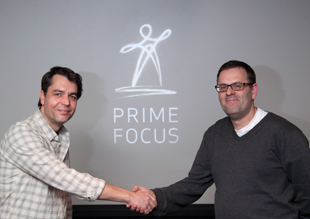 ‘We’ve been able to electronically adjust the sound of the rear speakers in Studio 4 using the Decorrelate option,’ eMerging’s Paul Mortimer offers. ‘This creates rear imaging with a much wider soundstage, more like you experience with the bank of rear surround speakers you find in a cinema than the two very distinct speakers you have in a domestic 5.1 TV system.’
‘We’ve been able to electronically adjust the sound of the rear speakers in Studio 4 using the Decorrelate option,’ eMerging’s Paul Mortimer offers. ‘This creates rear imaging with a much wider soundstage, more like you experience with the bank of rear surround speakers you find in a cinema than the two very distinct speakers you have in a domestic 5.1 TV system.’
‘The Trinnov system has also helped the front imaging,’ Mortimer continues. ‘When you’re mixing for TV or DVD, the recommended front speaker positions have the centre set back behind the line between the left and the right speakers, and that’s how they are arranged at Prime Focus — but of course in a cinema, the front three speakers are in a line.’
‘With Trinnov and eMerging’s help, we’ve been able to create a custom mode to correct the speaker positions electronically when mixing for film,’ Hooper says. ‘You particularly notice it in the front panning, which now seems much more even and realistic in our film mixes.’
Despite its complexities, Hooper is confident in the system’s usability: ‘Obviously, you have to teach the processor about your room, but you can do that with a single set of measurements with the 3D mic from one position if you like,’ he explains. ‘Now that is done, we have two presets set up, one for TV mixing and one for cinema mixing, and we just switch between the two depending on what work we have booked that day. The processor is accessible via software running on the same computer we use to access Pro Tools, so we can adjust it from the mixing console.’
With the London facility in good shape, are the monitoring arrangements in the US and India facilities about to follow suite? Hooper does not believe that there are any differences between the different markets’ technical requirement that would present an obstacle. If they do, further Trinnov systems will be working with the Pro Tools and AMS Neve DFC installed in Mumbai, and the Pro Tools 7.1 Dolby Commercial suite in New York.
‘The Trinnov installation has been very valuable and we are still perfecting our set-up,’ Hooper confides. ‘Once we are totally happy with this we will look at further installations.’
More: www.primefocusworld.com/location/uk/london
More: www.emerginguk.com
More: www.trinnov.com




